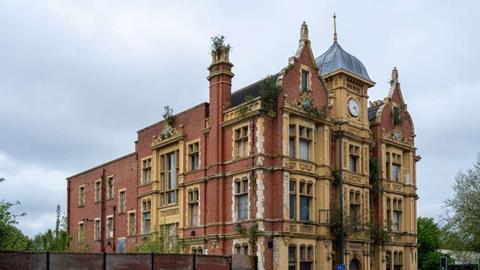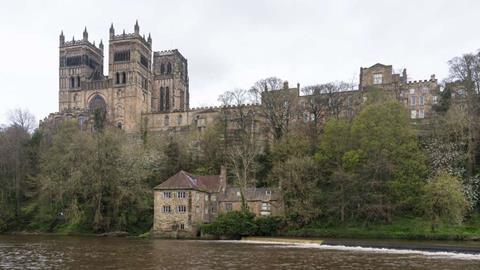Decaying country house and huge Welsh colliery among empty and disused buildings in need of urgent repair

A country house tottering on the brink of neglect and a 1930s cinema built in the shape of a cash register are among 86 threatened sites which have been added to Save Britain’s Heritage’s Buildings at Risk register.
New entries to the campaign group’s influential list for 2024 include a vast colliery building in Wales, a picturesque mill in the shadow of Durham Cathedral and a Victorian public baths in King’s Lynn.
The register consists of more than 1,400 at risk buildings, which are both listed and unlisted but all empty and disused.
Moggerhanger House in Bedford, added this year, is an “exceptional” grade I-listed country house remodelled by John Soane between 1809 and 1812 and regarded as an important example of his work.
Restored by its owner, a charity, 15 years ago, it is now suffering from significant structural issues with its render starting to fail and props being used in some areas to hold up ceilings.

Essoldo Cinema in Stretford, Greater Manchester, was built in 1936 with a dramatic curving roofline designed to look like a cash register, said to be a reflection of the architect’s view of the film industry.
Once a cinema and bingo hall, the grade II-listed building has been closed since 1997 despite consistent rumours of plans to reopen it.
Trafford Park Hotel, also in Stretford, is an “ornate and wonderfully detailed” grade II-listed building opened in 1902 which was built to serve the workers of the newly created Trafford Park.

Although many of the hotel’s original fittings are still in place, including a grand staircase, the extra-long urinals built in the basement for football fans heading to the nearby Old Trafford stadium have been removed and squatters have left the building in a generally poor condition.
Durham’s grade II-listed Old Fulling Mill is another charismatic new entry, standing on the banks of the river Wear with the city’s 12th century cathedral towering above it.
While there has been a mill on the site since at least 1416, the current building dates to the 17th century and had been used by Durham University as a museum of archeology. It is now empty, boarded up and vulnerable to decay and vandalism, Save said.

The huge Penallta Colliery in Caerphilly once produced the most amount of coal in one week in Europe. Built between 1905 and 1909, it includes a giant grade II*-listed engine house with some nearby baths, both of which are now abandoned.
Liz Fuller, Save’s buildings at risk officer, said: “While the variety of fascinating structures is inspiring, it is shocking that they are at risk at all.

“The new entries serve as an urgent reminder that these historic buildings are a resource which, if restored and reused, have the potential to deliver huge benefits to their communities through their character, shared history and their return to use.”
The entries are nominated by Save’s supporters, heritage professionals and the public. The register is intended to serve as a national platform for raising awareness of neglected historic buildings and their potential to bring meaningful benefit to the places in which they stand if restored and reused.
















No comments yet